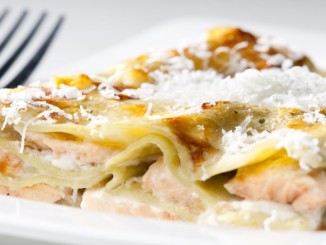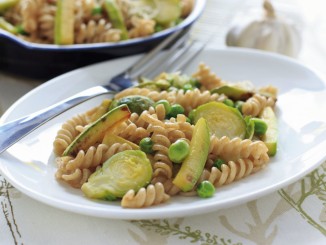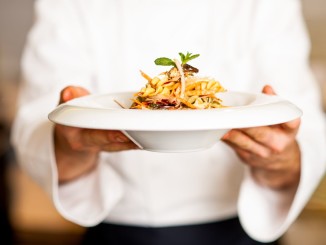
Whilst Italians consume 26 kilos per head every year, Britain is way down in the tables, eating 2.5 kilos – a tenth of what Italians consume.
By Verite Reily Collins
Italians eat twice as much pasta as Venezuelans (second highest in annual consumption), according to the International Pasta Organization of Rome (IPO). However, at the moment Britons have other things on their mind – the country is in the throes of holding its breath over football, Britain is currently involved in a painful debate over benefits, or otherwise, of being part of the European Union. One benefit the country has gained is the diversity of food now found in its shops and restaurants. Britons have become much more adventurous in what they eat, while pasta has now become a staple of the British diet, and a favorite of British children. For years the only pasta dish the British knew was macaroni cheese. Then, in the ‘60s, spaghetti Bolognese made its way onto dinner tables and today, it is estimated that over 100 varieties of pasta shapes can be found on supermarket shelves. I can still remember the first genuine pasta I ate, sitting in the restaurant of the Hotel Roma, in the middle of Bologna – a city that many say has some of the best cooking in Italy. Then, I was young, and lasagna was an undiscovered treat. Today, over 100 different sorts of pasta are sold in supermarkets. Children around the world demand pasta as a favorite for meals. However, there is one big difference; Italians tend to eat pasta for the first course, while Britons make it the main course of a meal, so tend to buy pasta dishes with a meat or protein content.
Ideas from Frozen Pasta Producers
Meanwhile, up the road in Milan, Zini has been making tradition pasta since 1956, and today follows food trends by supplying gluten-free products. With the current European Football cup occupying TV audiences across Europe, their “Delicious polenta sticks” form an unusual appetizer, and their advertising promotes these as a tasty snack to accompany their beer, whilst fans watch football on TV, offering “Ideal at any time of the day, prepared them in a few minutes in the pan in oven or fried, and ideal for a snack as they are suitable for vegans or vegetarians”. Harnessing the youth market’s over-use of social media, the company has made a series of ultra-simple videos, showing those who-can’t-cook, how to prepare Zini products: what utensils to use, with which of their frozen packs; how to open them! And how long to cook them for, to produce an appetizing meal. Their Export Manager, Jacqueline Delgado, is also featured on YouTube, along with a series of simple explanatory video. These are beautifully filmed, give step-by-step instructions (even showing how to push buttons on a hob), so that any self-respecting university student should be able to open their tablet and prop it up in front of the stove in order to follow beautifully photographed instructions. An enterprising store could even hand out leaflets this fall at Freshers weeks, listing the YouTube addresses, just to make sure the information is readily accessible to any consumer.
Moving on to Germany, Keck, with its memorable strap-line ‘Pasta ready to (h)eat’, claims to be the market leader in IQF Pasta and IQF Noodle Nests, promoting the fact that they can flash cook and freeze pasta in noodle nests. This highlights that a major world market is for Chinese noodles, and the fact that Keck works for many different fast-food suppliers. Working with customers, they can tailor the size and shape of their noodle nests, to fit the dimensions of their containers: round, oblong or square. In their own words, “Keck and partner company Danrice do not represent any of their own marketing interests on the market. This is the business of their customers which are processors in the industry or in the out of home market. But there is another group of customers: Trading companies, offering cooled or deep-frozen ready-to- heat-meals in bags, bowls or other containers under their own brands. On the basis of their expertise Keck and Danice are able to respond exceptionally detailed to the requests of their customers and develop bespoken solutions for their production and filling. Examples of such specific product demands are noodle nests in a variety of sizes, rice and grain mixtures or special cooking points, which make the optimal consistency of the products in regenerated dishes possible. In fact, concerning Chinese noodles, legend, and some historians, credit Marco Polo with bringing pasta noodles to Europe. Whatever the truth may be, around 60-70 billion packs of noodles are eaten worldwide each year. Noodles have been eaten in China since 100AD but instant noodles were only developed in Japan in the 1950s.
Free-From on Retailers’ Shelves
Tesco tick all the boxes in this category, with Amy’s Kitchen Gluten Free Vegetable Lasagna. They are made with spinach, courgettes, carrots, tomato sauce and cheeses, layered between all natural rice pasta and sold in individual 225 grm portions GBP2.20. Tesco are also featuring special offers on the Bird’s Eye ranges they stock, such as Pasta Penne, Rigatone, etc, while Waitrose, not to be outdone, is offering luxury ingredients such as porcini mushrooms and truffle oil, in products produced by Soli and Dell Ugo, who promise a “generous filling of plump Portobello & wild Porcini mushrooms, infused with garlic and truffle oil, all wrapped in large free-range egg pasta parcels.” Free range eggs are also becoming a sales feature that is heavily promoted, probably because of all the recent publicity.
Sauces
For cooks who prefer to open a jar to add sauce to their pasta dishes, Dolmio is a big favorite in supermarkets. Most will have a big section of shelves dedicated this this and rival companies. Dolmio have come up with a twist for the popular Bolognese sauce, which caters for today’s customers’ tastes for spicier ingredients, such as chili peppers and green peppercorns, to heat up a slightly spicier version of this classic sauce. Pandering to the expert’s advice to eat healthily, customers are promised “our expertly blended Intense Bolognese sauces are one of your five a day and contain 100% natural, quality ingredients. Choose from Intense Spicy Chili, Intense Onion & Garlic or Intense Sundried tomato.” Currently Dolmio’s TV advertising asks “When will be your Dolmio night?”, promoting the idea of the ‘ideal’ family, going back to eat around the family dining table, with Mama dishing up a mouth-watering lasagna, with all ingredients supplied by Dolmio, and assembled in one easy-to-make pack. Whereas Bertolli, as well as making the usual basic sauces, offers fashionable tomato sauces but now adds vodka as an ingredient to its latest jars. Therefore, whatever happens with the IN/OUT vote in the UK, it remains obvious that the pasta category is still going to be top of the popularity polls for kids and their parents.



